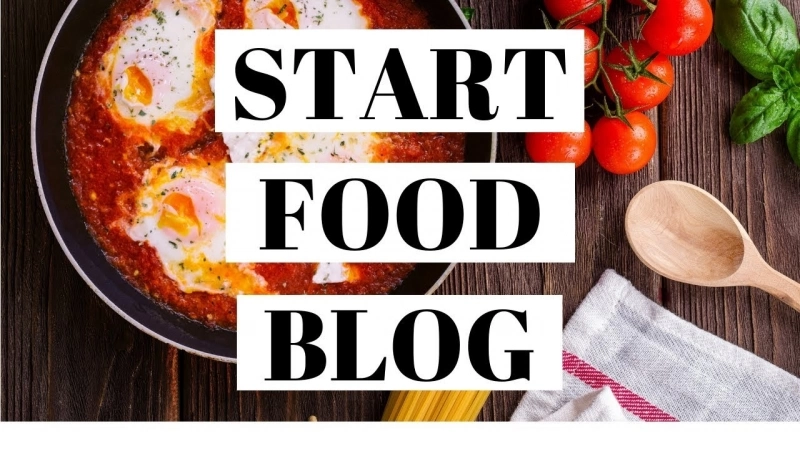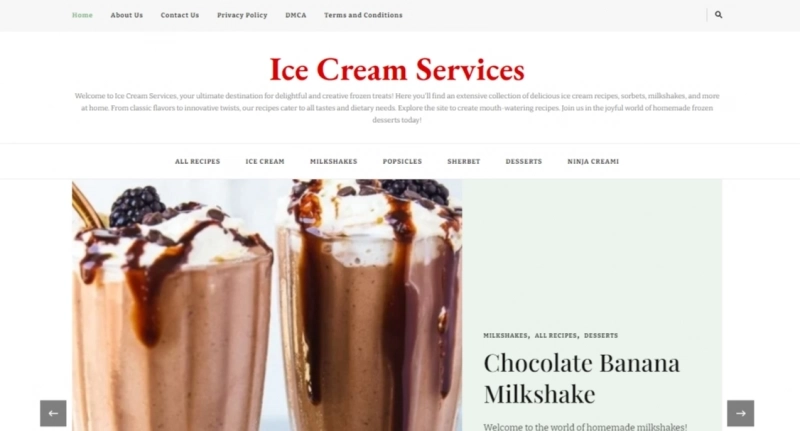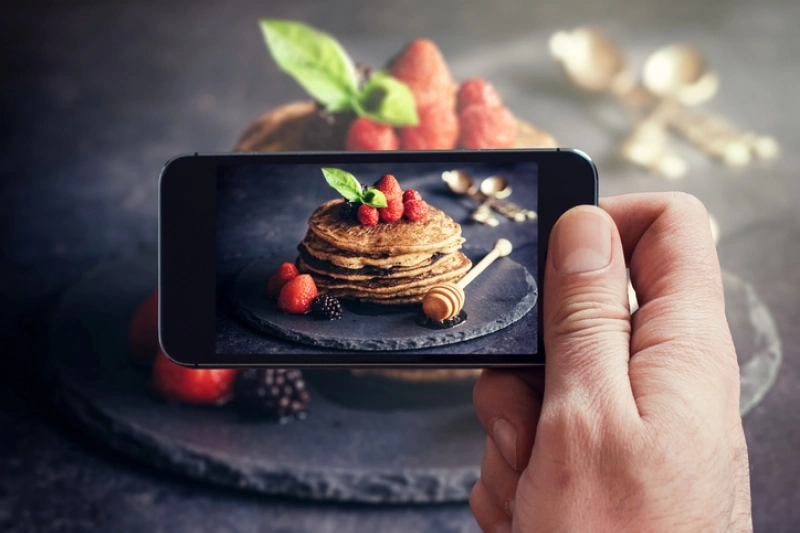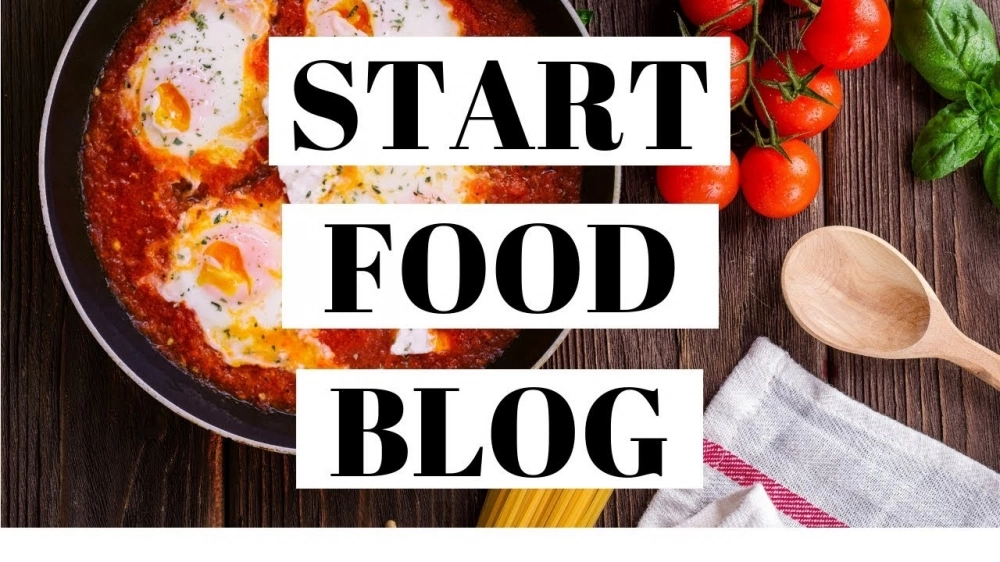Starting a food blog is an exciting and rewarding way to share your culinary passion with the world. Whether you want to turn your blog into a business or simply share your favorite recipes, this guide will help you about how to start a Food Blog step-by-step.
Step 1: Choose Your Niche
Identify your unique angle in the food blogging world. Whether it’s vegan recipes, baking, quick meals, or regional cuisine, a specific niche helps attract a dedicated audience.
Step 2: Select a Domain Name and Hosting
Choose a Domain Name
Your domain name is your blog’s address on the web. Keep it short, memorable, and relevant to your niche. Tools like Namecheap, Hostingerand GoDaddycan help you find and purchase a domain.
Choose a Hosting Service
A reliable hosting service is crucial. It stores your blog’s data and makes it accessible online. Popular options include:
- Bluehost: Offers affordable plans and excellent customer support.
- SiteGround: Known for speed and reliability.
- HostGator: User-friendly with scalable options.
Step 3: Install WordPress
WordPress is the most popular platform for bloggers due to its flexibility and user-friendly interface. Most hosting services offer one-click WordPress installation.
Step 4: Select and Customize a Theme
Your theme determines your blog’s appearance and layout. Choose a theme that is responsive (mobile-friendly) and customizable. Popular themes include:
- Astra: Lightweight and highly customizable.
- Foodie Pro: Specifically designed for food blogs.
- Divi: Offers a visual drag-and-drop builder.
Step 5: Install Essential Plugins
Plugins add functionality to your WordPress blog. Some essential plugins for food bloggers include:
- WP Recipe Maker: Helps you create beautiful, printable recipes.
- Yoast SEO/RankMath: Assists with search engine optimization.
- Smush: Optimizes images for faster loading times.
Step 6: Create Important Pages
Before you start posting recipes, create the foundational pages for your blog:
- About: Share your story and what readers can expect.
- Contact: Provide a way for readers and potential collaborators to reach you.
- Privacy Policy and Disclosure: Essential for legal compliance, especially if you plan to monetize your blog.

Step 7: Start Blogging
Begin by writing high-quality, engaging posts. Focus on:
- Recipes: Clearly written with step-by-step instructions and photos.
- Tips and Tricks: Share cooking tips, kitchen hacks, and ingredient information.
- Personal Stories: Connect with your audience by sharing your culinary journey and experiences.
Step 8: Promote Your Blog
Social Media
Create profiles on major social media platforms (Instagram, Pinterest, Facebook, Twitter) and regularly share your content.
Email Marketing
Build an email list using services like Mailchimp or ConvertKit. Offer a freebie (like an e-book or exclusive recipe) to encourage sign-ups.
SEO
Optimize your content for search engines using SEO best practices. Use keywords naturally in your posts, optimize images, and ensure your site loads quickly.
Step 9: Engage with Your Audience
Respond to comments on your blog and social media. Engage with other bloggers in your niche by commenting on their posts and collaborating.
Step 10: Monetize Your Blog
Once you have a steady stream of traffic, consider monetizing your blog:
- Ads: Join ad networks like Google AdSense or Mediavine.
- Affiliate Marketing: Promote products and earn a commission on sales.
- Sponsored Posts: Partner with brands for paid content.
- Products: Sell your own e-books, meal plans, or merchandise.
Resources for Further Learning
Food Blogger Pro
A comprehensive resource offering video tutorials, community support, and courses on everything from setting up your blog to generating income.
Photography Tutorials
Invest time in learning food photography. Great photos attract readers. Check out resources like:

Food Blogger Pro:
- What You’ll Learn: Camera basics, lighting, composition, styling, and photo editing.
Pinch of Yum:
- What You’ll Learn: Provides detailed guides and tutorials.
The Bite Shot:
- What You’ll Learn: Practical tips and tricks for food photography on YouTube.
Equipment and Props
Starter Camera:
- Recommendation: Canon EOS Rebel series for beginners. Start with what you have and upgrade as you go.
Editing Software:
- Recommendation: Adobe Lightroom and Photoshop for professional photo editing.
Props:
- Tips: Use simple, neutral props to let your food shine. Thrift stores, antique shops, and budget-friendly stores like Target are great places to find props.
Bookkeeping and Business Tools
If you plan to monetize your blog, start managing your finances early.
FreshBooks:
- Why Use It? It’s user-friendly and helps you keep track of receipts, income, and expenses. It simplifies bookkeeping and tax preparation.
VistaPrint:
- Why Use It? For creating professional business cards on a budget, useful for networking at blogging events.
Final Thoughts
That’s all for how to start a food blog. Starting a food blog requires time, effort, and patience, but it’s incredibly rewarding. Remember, every successful blog started from scratch. Take it one step at a time, and enjoy the process of sharing your culinary creations with the world. Happy blogging!
Words of Encouragement
You’ve got this! The hardest part is taking the first step. Build your blog brick by brick, and soon, you’ll have a wonderful space to share your culinary creations with the world.
For more detailed information and to explore the resources mentioned, check out the following links:
Good luck with your food blogging journey!
Best and Healthy Recipes on our Website
